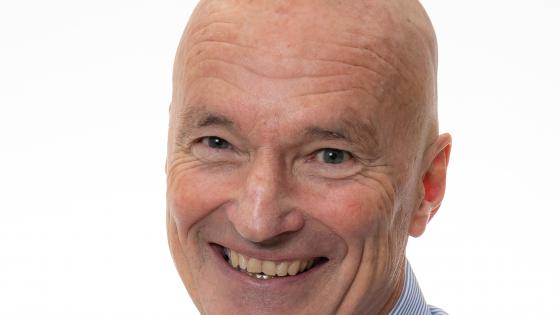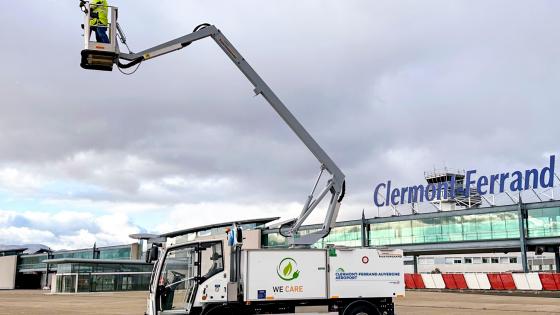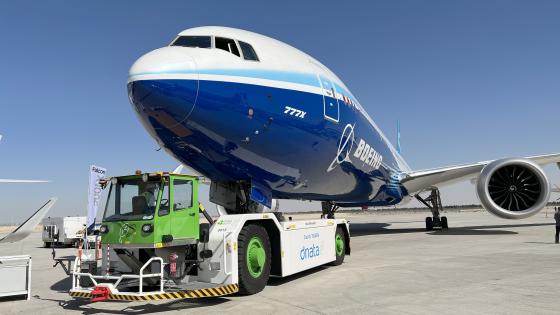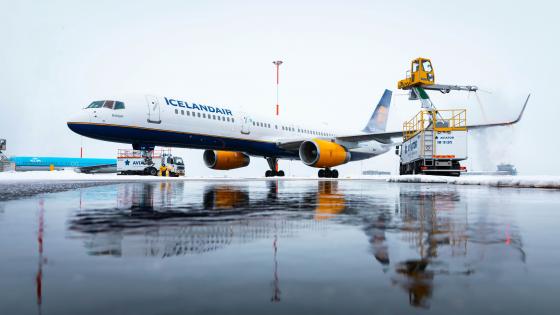Lars Barsøe, vice-president of sales and marketing at Vestergaard Company, reflects on the measures aviation is taking to meet its ambitious climate targets.
When he became the first human being to step on to the Moon’s surface, in 1969, Neil Armstrong uttered the now famous phrase: “One small step for man, one giant leap for mankind.” Today, in aviation and the travel industry as a whole, many small steps and a few giant leaps are being taken to tackle the environmental footprint of flying.
Airlines are investing heavily in upgrading their fleet to aircraft types that use much less fuel than older models, among them the Boeing 787 and Airbus 350, while airframe manufacturers continuously improve fuel efficiency with wingtip devices and improved engine designs.
Eco-minded innovation can be seen on the ground, too. Many airports have implemented green pushbacks, where engines are not started until far away from the terminal, in addition to glide landings, where engines are at idle almost the entire way down, to reduce fuel usage further. Even more steps can be taken in reducing taxi and hold times in airports through proper scheduling.

Lars Barsøe has been with Vestergaard Company since November 2009
The fuel factor
The sector has also turned its attention to sustainable aviation fuel (SAF), which has the potential to replace fossil fuel. Some airlines are already blending SAF made from renewable sources into their existing fuel. This type of SAF is available in limited quantities, but many companies are already working hard on coming up with scalability of fuel based on Power-to-X technology, which uses renewable electricity, for example wind power, to create something else (‘X’). In aviation’s case, renewable energy is helping create an e-kerosene from hydrogen and captured CO2. At present, the price of synthetic kerosene is three times that of fossil kerosene, but with scalability and development the cost is expected to fall considerably over time.
A number of airlines already use ‘offsetting’ to reduce their carbon footprint, although it should be noted that programmes of this nature do not truly reduce carbon emissions.
We are committed to delivering a full range of carbon-neutral GSE by 2030
Emissions on the ground
Approximately 10% of carbon emissions from aviation occur on the ground. A large portion of this is from ground support equipment (GSE). Denmark-headquartered Vestergaard Company has a long history of innovation and sustainability. Our vision involves playing our part in reducing the global aviation industry’s carbon footprint by developing GSE that does not exacerbate the carbon footprint of travel. We are committed to delivering a full range of carbon-neutral GSE by 2030, and aim to deliver 75% of all Vestergaard vehicles in sustainable versions by 2025.
In our portfolio today is a series of fully electric water and lavatory servicing vehicles that now operate across the world in warm and cold airports. Operators love them for their easy access, simple operation and very good visibility from the cabin. Owners love them for their operating costs and lower maintenance costs. Airport owners love them for their contribution to the environmental goals and elimination of small particle pollution on the ramp.

Vestergaard’s e-Mini MY Lite is the world’s first fully electrical de-icer
We also have a fully electric small de-icer now in use around the world, and our hybrid-electric large Elephant BETA de-icer is in operation in more than 20 airports. Customers are adopting the green approach both because it is part of their vision and that of their airline customers, and also because it makes economic sense. With reductions in CO2 (up to 87%), but also energy costs (more than 60%), the whole unit makes perfect economic sense as well.
Due to be released to the market this year is our larger open basket de-icer, the Elephant MY, in a fully electric version, and within the next 12-18 months our large Elephant BETA will also be available in a fully electric version.
Kalmar Motor
Also part of the Vestergaard family is Kalmar Motor from Sweden. Kalmar Motor has offered electric pushback and tow tractors for more than a decade, with electric tractors in use all over the world. Here again the operational costs are reduced very significantly and there is no longer a diesel tractor sitting at idle for 15-20 minutes attached to the aircraft just waiting for doors to close. This means a substantial reduction in noise and pollution in addition to energy usage.
The Kalmar range of electric tractors includes small and very large towbarless tractors as well as fully electric conventional tractors for aircraft of all sizes from the small Dash 8 up to B777 or A380.
Our supply chain has committed to an ongoing programme of sourcing material with the lowest carbon footprint
Ethical production
Vestergaard Company is committed to CO2 reductions in our production as well. Our buildings are heated by geothermal energy, thanks to several kilometres of hose buried in the ground. On the roof of the production buildings are solar panels that supply almost half of our electricity needs. We reuse hot water from the testing of our de-icers to heat buildings and, after using its heat, the water is recycled so we do not use more drinking water than absolutely necessary.
Our supply chain has committed to an ongoing programme of sourcing material with the lowest carbon footprint. However, as our main components are steel, there remains some way to go before being completely neutral on that front. We are very close to full documentation of the total carbon footprint of our products (Scope 3) and can then set new targets for reduction.

Kalmar’s TBL 800 is an electric tractor designed for pushback and high-speed maintenance towing
The company has a strong commitment to corporate social responsibility and as well as the ambition to make ground handling carbon neutral by 2030, we also aim to eliminate incidents/accidents by 2030. Some of this can be done through design and safety measures, but we are also working on automation and on making many of our operations autonomous. We believe that reducing the tasks of the operators will help prevent incidents, save on labour cost and optimise the operations to save on energy, de-icing fluid and block time.
In the post-pandemic world, most companies are struggling to find enough and sufficiently qualified staff, so they will benefit from automation and autonomous operations. As ground handling is a low-margin industry, those should also lead to better deals and greater profits.

The Elephant BETA-15 is the highest reaching, truly mobile standard aircraft de-icer
Towards a giant leap
So, while a completely green airports sector would be a “giant leap for mankind”, we believe that all the small steps man can take will help us stay in this industry and help keep us in the public eye. Governments and authorities will acknowledge that we are doing our bit and we could be saved from stricter regulations like shutting down short-haul routes and curtailing long haul through additional fees and taxes.
Vestergaard Company along with Kalmar Motor has begun this journey and has been recognised for it. We hope that other manufacturers will back the initiative and that airports will ensure there is sufficient electrical power for electrical vehicles or access to hydrogen for hydrogen-powered vehicles. Vestergaard Company and Kalmar Motor will display their product range at GSE Expo in Las Vegas in September 2023 and at GSE Expo in Lisbon in 2024.
